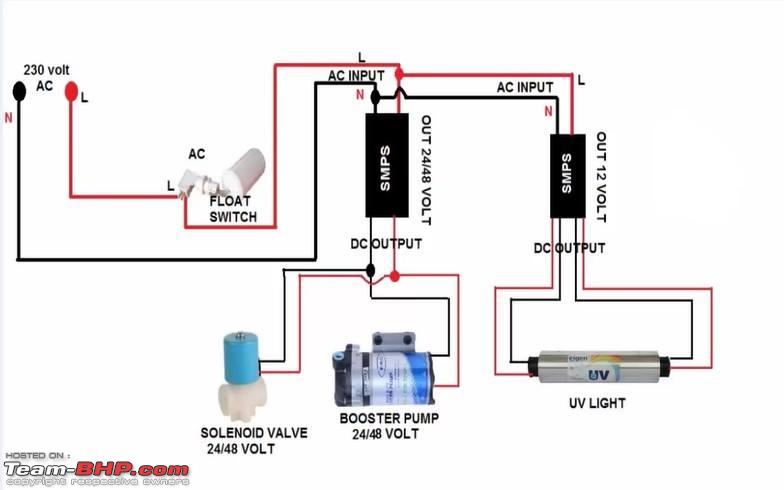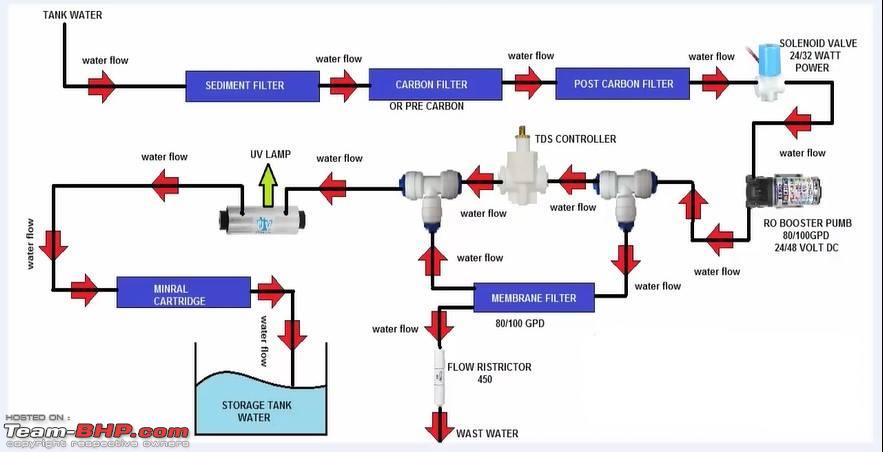I thought of carrying / buying bottled water but these create plastic waste and are unsustainable in the long run, especially with my car camping situation.
BHPian Chhanda Das recently shared this with fellow enthusiasts.
The pandemic got me thinking. How can we make sure we are drinking clean water when we travel? I thought of carrying / buying bottled water but these create plastic waste and are unsustainable in the long run, especially with my car camping situation. Also, fake bottled water isn’t too difficult to find. I thought of taking the water from home but that adds weight to the car, increases fuel consumption and causes more wear and tear on consumables like tires, brake pads / shoes, etc. So I thought of building a drinking water treatment system for my 1.6 gasoline First generation Creta AT.
My resources are very limited. So I didn’t want to spend around INR 3500-4000 on a new system and instead converted my home water treatment system into a portable one so that I can use it both at home and in my car if I need to. In addition, a permanent setup would require changes to the RC and I am not ready to expose myself to this stress even at this old age.
The raw water goes as follows:
1) Spin filter or sediment filter to remove large dirt particles
2) Pre-carbon filter or chemiblock filter to remove bacteria, chlorine, odors, etc.
3) Post carbon filter to remove rust, scale, etc.
4) RO (Reverse Osmosis) to remove ions, unwanted molecules and larger particles.
5) UV (ultraviolet) filter to kill / deactivate viruses, bacteria, protozoa, etc.
6) UF (ultrafiltration) to remove suspended matter, bacteria, viruses, endotoxins and other pathogens.
7) Mineralizer to add essential minerals like magnesium, calcium etc while maintaining the required pH
For the electricity and water connection, please see the pictures and the video below. The changes to the inventory filter are as follows:
1) Float switch removed as there is no suitable reservoir
2) Installed securing clips on all connections on all possible sides to prevent leakage in a moving car
3) The transparent cover has been removed to reduce weight. I could have removed the base and back as well, but chose not to to prevent plastic parts from touching the pump as it gets hot during use.
4) Water tank removed to prevent water splash / drip in the car
5) For the reservoirs I used 2 liter soft drink bottles for the raw water, drinking water and waste water. I drilled their caps and installed 1/4 inch bulkhead connectors on them.
6) Shut-off valves have been installed where necessary to prevent the water dispenser from drawing unclean water.
7) For assembly, I put it in a bag and hung it from the back of the passenger seat.
8) I powered this through the all-sine wave inverter in my car. After taking efficiency / conversion losses into account, the power consumption for the 60-watt system is around 72 watts. I could have run this with a 12V to 24V DC boost converter, but decided against it as it would drive the cost up significantly.
The total cost was INR 510 and this includes the additional connections (elbows, T and bulkheads), shut-off valves, the safety clips and the rechargeable USB pump / water dispenser …
Water flow diagram:
Electrical wiring and connections

For more insights and information, see the BHPian comments.


Comments are closed.